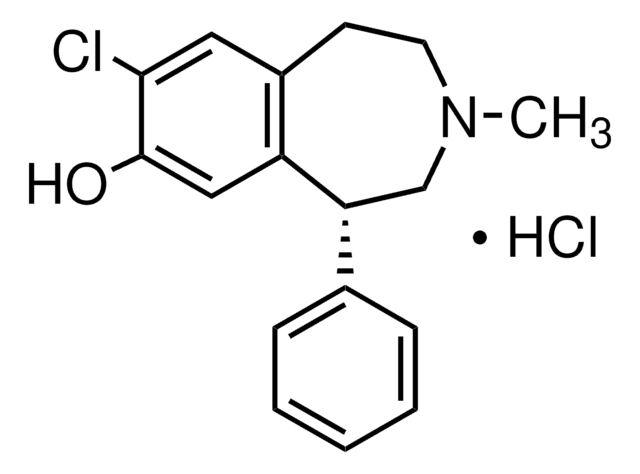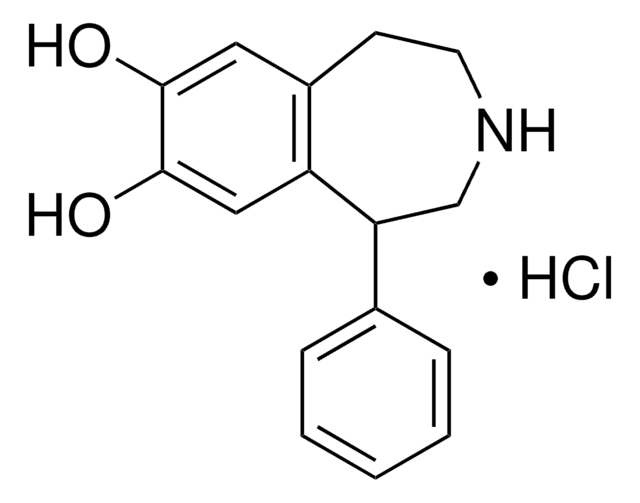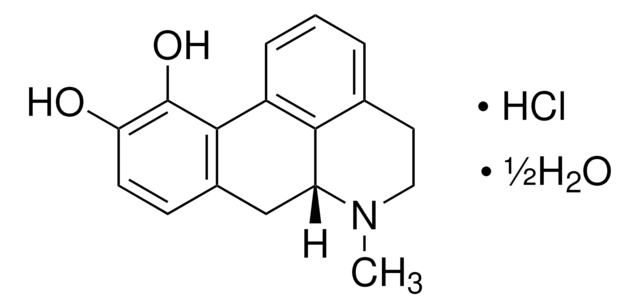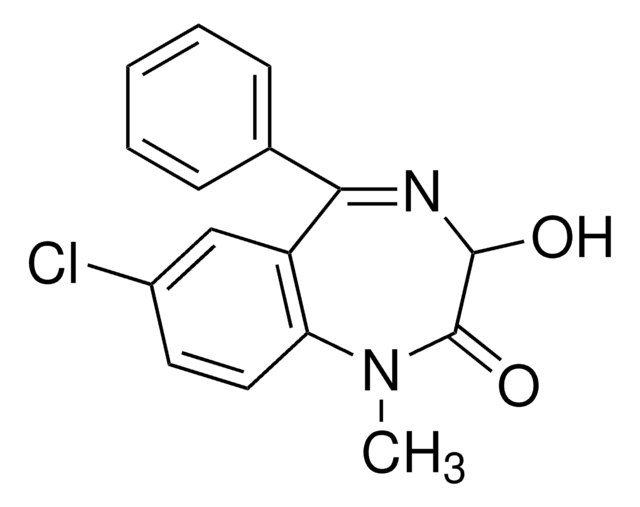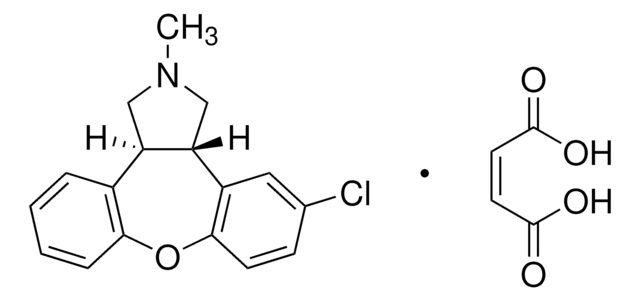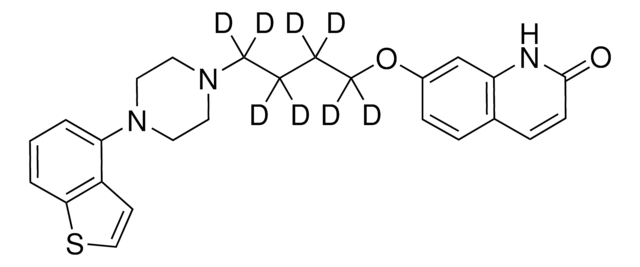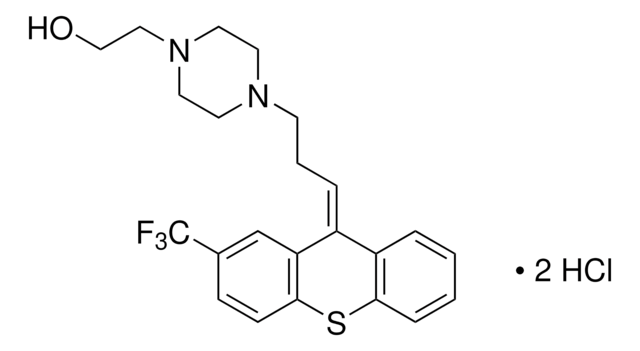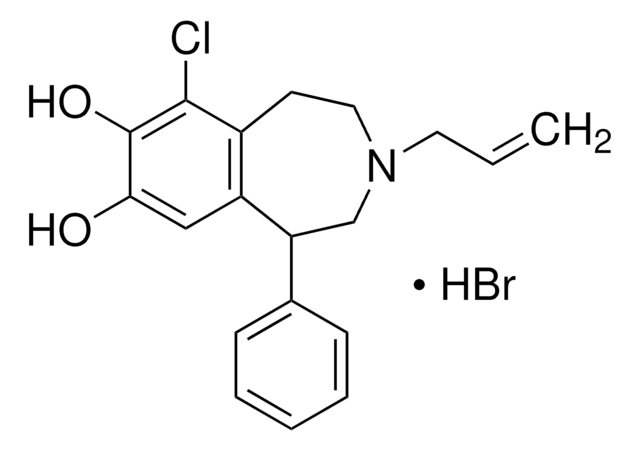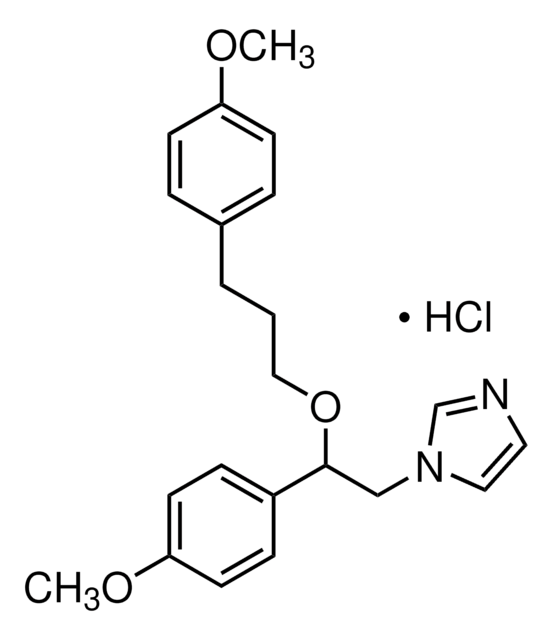S101
(R)-(+)-SKF-38393 hydrochloride
≥98% (HPLC), solid
About This Item
Productos recomendados
Nivel de calidad
Ensayo
≥98% (HPLC)
Formulario
solid
actividad óptica
[α]22/D +16.1°, c = 1.2 in methanol(lit.)
condiciones de almacenamiento
desiccated
color
off-white to light tan
solubilidad
0.1 M HCl: 1.2 mg/mL
ethanol: 3.4 mg/mL
H2O: 5 mg/mL
aqueous base: unstable
cadena SMILES
Cl.Oc1cc2CCNC[C@H](c3ccccc3)c2cc1O
InChI
1S/C16H17NO2.ClH/c18-15-8-12-6-7-17-10-14(13(12)9-16(15)19)11-4-2-1-3-5-11;/h1-5,8-9,14,17-19H,6-7,10H2;1H/t14-;/m1./s1
Clave InChI
YEWHJCLOUYPAOH-PFEQFJNWSA-N
¿Está buscando productos similares? Visita Guía de comparación de productos
Aplicación
Acciones bioquímicas o fisiológicas
Características y beneficios
Precaución
Reconstitución
Código de clase de almacenamiento
11 - Combustible Solids
Clase de riesgo para el agua (WGK)
WGK 3
Punto de inflamabilidad (°F)
Not applicable
Punto de inflamabilidad (°C)
Not applicable
Equipo de protección personal
dust mask type N95 (US), Eyeshields, Gloves
Elija entre una de las versiones más recientes:
¿Ya tiene este producto?
Encuentre la documentación para los productos que ha comprado recientemente en la Biblioteca de documentos.
Los clientes también vieron
Nuestro equipo de científicos tiene experiencia en todas las áreas de investigación: Ciencias de la vida, Ciencia de los materiales, Síntesis química, Cromatografía, Analítica y muchas otras.
Póngase en contacto con el Servicio técnico
